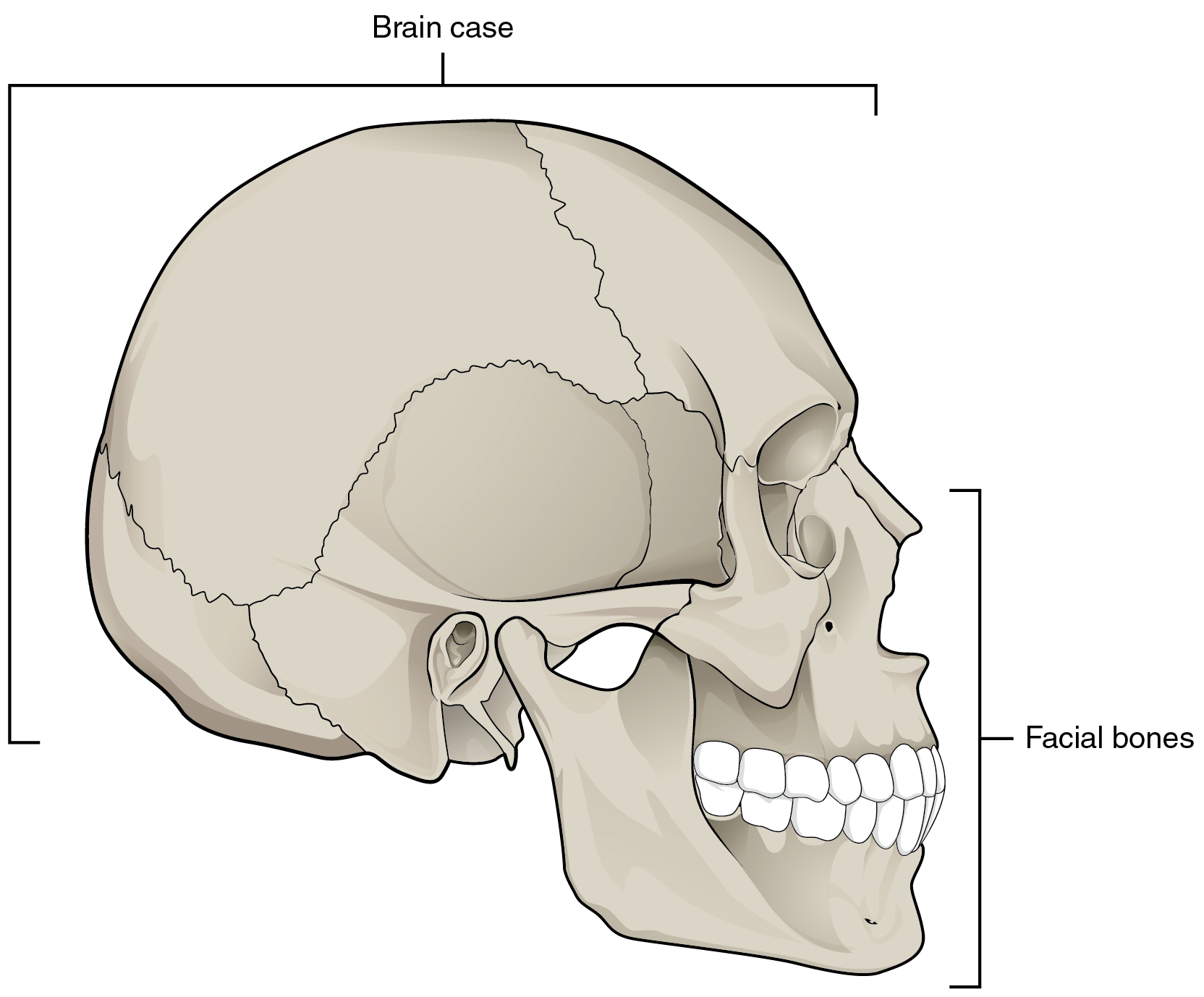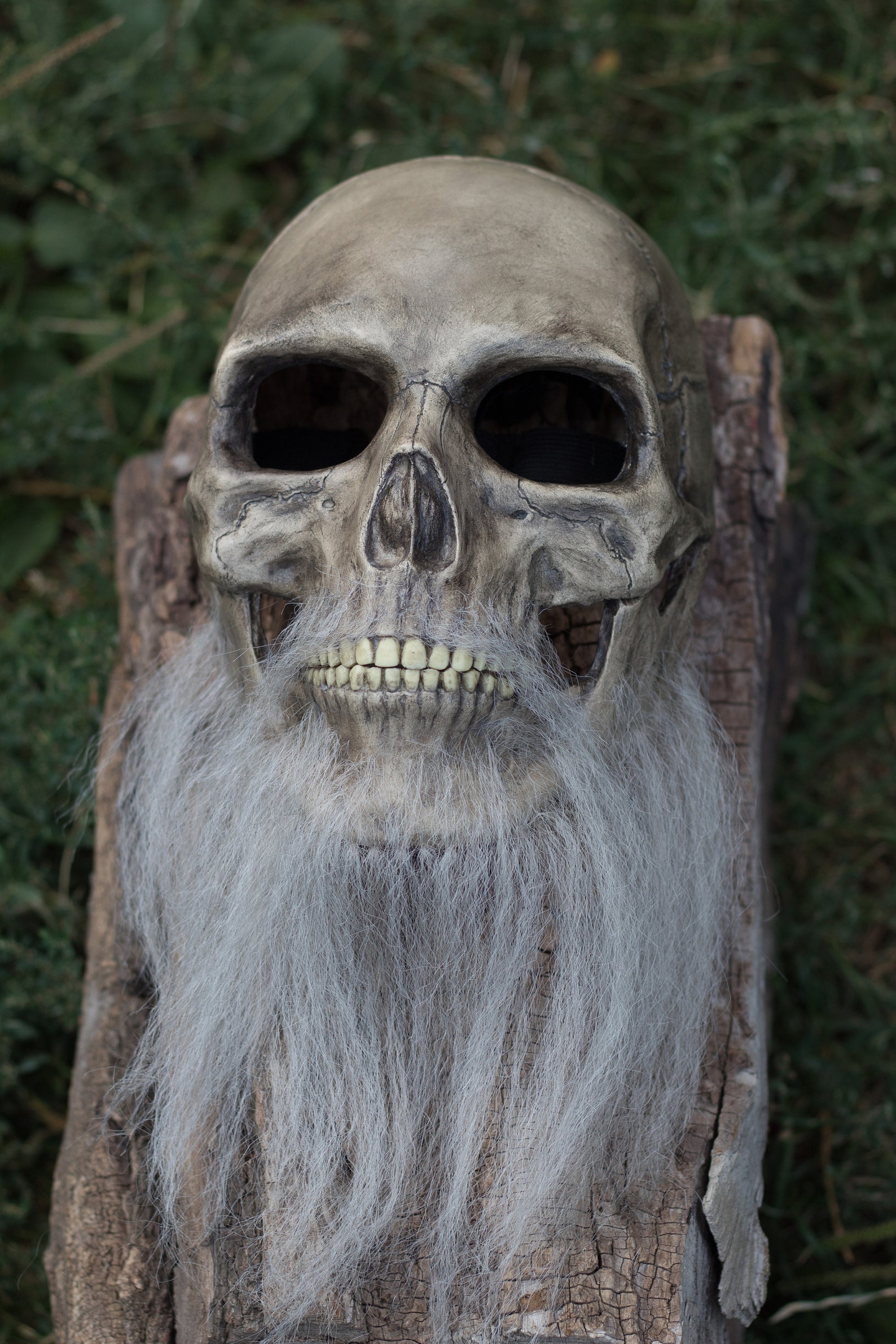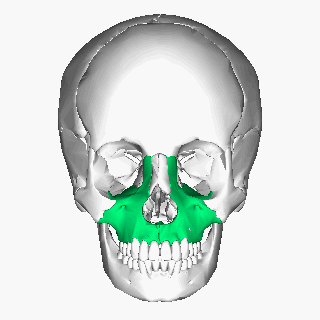

The skull encases and protects the brain as well as the special sense organs of vision, hearing, balance, taste, and smell. The cranial is the cranium that encloses the brain and acts as a protective case for the brain. Our skull is basically comprised of 22 different bones, which are further divided into two categories, namely: The upper portions of the digestive and respiratory tracts are also housed within the hollow oral and nasal cavities of the skull. The cranial cavity (space inside of the skull) communicates with the vertebral canal (through which the spinal cord runs) via this foramen.Attachment points for the muscles of the head and neck are located on the exterior surfaces of the skull that allow vital movements like chewing, speech, and facial expressions. The foramen magnum is located approximately two-thirds down the length of the bone and directly medial. Occipital bone – The occipital is a roughly saucer-shaped bone at the back and lower part of the skull. Each parietal articulates with the frontal bone, the opposite parietal (on top of the head), and the occipital, temporal, and sphenoid bones on each side of the skull.

They flank the midline of the top of the skull directly posterior to the frontal bone and extend rearward to the crown of the head. Parietal bone – Together, the two parietal bones form the top and upper sides of the skull. This joint is called the temporomandibular joint. Just anterior to a bump behind and below the ear called the mastoid process, the temporal bone articulates with the mandible (the jawbone). The posterior temporal bone contains the acoustic meatus (the ear canal). Temporal bone – The temporal bone is located at the base and side of the skull, just anterior to the occipital bone, inferior to the parietal, and posterior to the sphenoid bone. The superficial aspect of the sphenoid lies just posterior to the bony ridge above the eye orbits.

It is one of the seven bones that articulate to create the eye orbit. Sphenoid bone – While the sphenoid looks to be a bilateral pair of bones when looking at a complete skull, it is actually a single bone that spans the skull from side to side. The single frontal bone articulates with the two parietal, nasal, ethmoid (not pictured), maxilla, and zygomatic bones on each side of the skull. Laterally, it extends from just superior and anterior to the area we commonly refer to as the temple. It roughly occupies the area from the eyebrows to just behind the superior hairline. It contributes to the process of lacrimation (production of tears) by enabling directional flow.įrontal bone – This is the large bone that comprises the human forehead and also creates the upper ridge and roof of the eye orbit (eye socket). Lacrimal bone – This small bone sits in the medial wall of the eye orbits. They create the bridge of the nose, sitting above the nasal cavity, and flank the midline of the nose just anterior and inferior to the frontal bone. Nasal bone – The nasal bones are two small bones that vary in size and shape in different individuals. These get broken in boxing and MMA bouts due to strikes and kicks to the face. It articulates with the frontal, sphenoid, maxilla, and temporal bones. Zygomatic bone – This bone forms the lateral and posterior component of the cheekbones it is the most curved portion. It also creates the most medial aspects of the cheekbones. Maxilla – The maxilla is the bone into which the upper row of teeth is set, and it forms the roof of the mouth. Not surprisingly, it is one of the most frequently fractured skull bones.

It is the most freely moving and least stable bone in the skull. The mandible moves when the mouth is opened and closed. It articulates bilaterally with the temporal bone to form the temporomandibular joints. Mandible – The mandible is the jaw, and it is the bone into which the lower teeth are set.


 0 kommentar(er)
0 kommentar(er)
